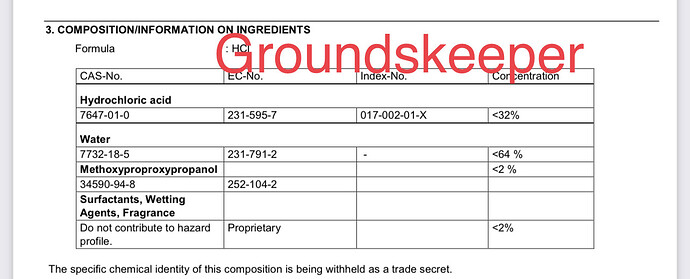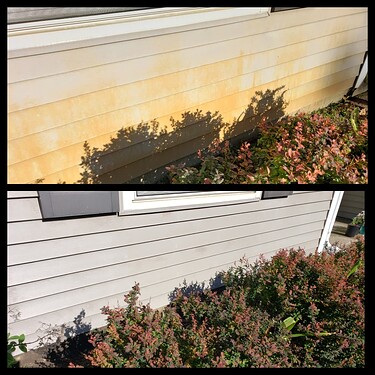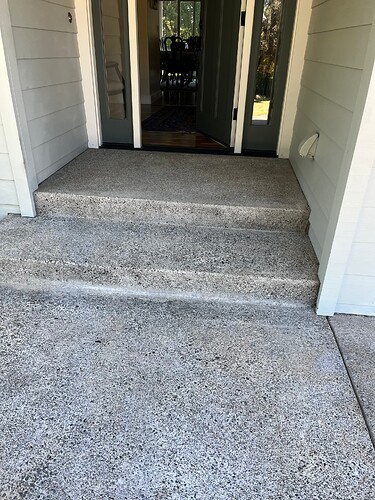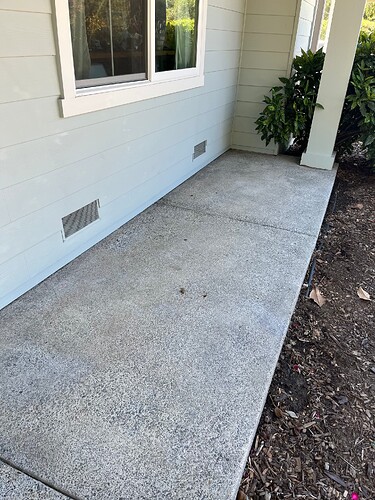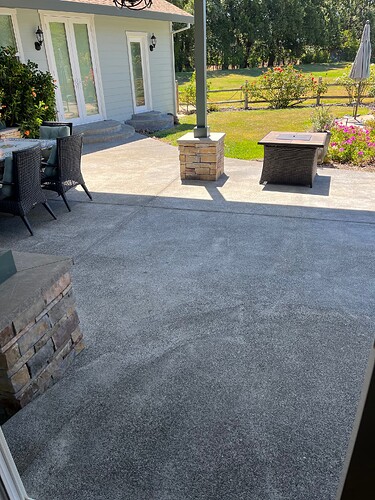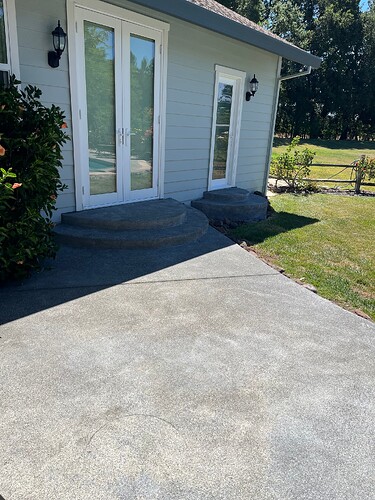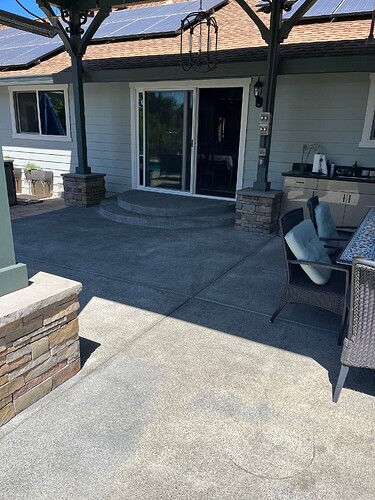I did a concrete job last week where I used F9 Groundskeeper to try and brighten up the concrete as it was really old and they wanted it to make it look as new and bright as possible. I pre-treated the concrete with a 3% mix, dwelled and then pressure washed at 2600 psi using 180° water. Then I used Groundskeeper at the max dilution recommendation of 12 to 1. There were a few areas where I also needed to use F9 Barc to deal with some rust stains and iron from the well water which melted right off. Between all that there was a couple stains that none of the above was able to remove. On those areas I applied One Restore and it took it right out. Not only that, but those areas also turned out to be a very beautiful bright white with almost a blue hue to it similar to in HID headlight. that is the look that I was expecting to get with using Groundskeeper at its strongest recommended concentration. I spoke with @Racer about it and we looked up the sds sheets together and found that both One Restore and Groundskeeper are very similar products.
The One Restore is just under 20% Hydrochloric Acid and also has 2-Butoxyethanol and one other “trade secret” ingredient.
The Groundskeeper is also Hydrochloric Acid but at 32% and has Methoxyproproxypropanol (less than 2%).
One Restore they say you can use full strength, and Groundskeeper cautions you to do no more than 12 to 1 and that is only on commercial grade concrete. When you dilute it down that much you get 2.6% which is about 8 times less strength than One Restore.
The question is has anybody compared these two side-by-side and actually used Groundskeeper say 1 to 1 which would bring it down to about 16%, which is still a little more undiluted than full strength One Restore? Also being that the most active ingredient is the same and only the type of secondary ingredients vary (I.E. One Restore has 2-Butoxyethanol and Groundskeeper has Methoxyproproxypropanol) how much differece do those two ingredients make between these products? If not much of a difference, why is it that Groundskeeper is highly cautioned to not use more than 12 to 1 and especially not on residential concrete, when One Restore is touted to be used full strength?
Both are about the same price, around $40 a gallon, but unless there is some significant difference between the two, it seems that buying 32% strength Groundskeeper and diluting 50% would be more cost-effective than buying One Restore at 20% and using it full strength. Maybe @CaCO3Girl can chime in and enlighten us?
(Btw, I am aware that these would rarely need to be used at full strength in general, despite the instructions from One Restore to not dilute, we all know how manufacturers will say to use more than we need because it fattens their wallets).
I am going to go back this morning and treat all of the concrete with a pretty good strength One Restore mix (i’m actually going to try test areas at different strengths including full strength to see if there is any difference in results) to see if I can get all of it to look the same, as it is kind of splotchy and the few areas I treated with the One Restore looks so much better.
Here is a screenshot with little red arrows pointing to where I used one restore. If you zoom in and look closely you can see how much whiter the concrete is.
Sds ingredient info for One Restore here:
Sds ingredient info for Groundskeeper here:


